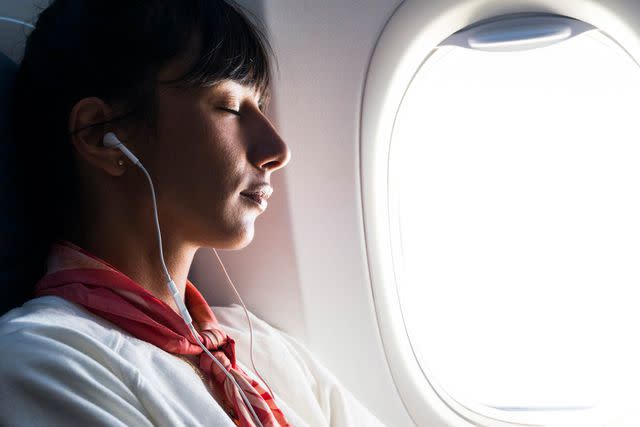The Secrets to Beating Jet Lag, According to a NASA Astronaut
- Oops!Something went wrong.Please try again later.
NASA astronaut Mike Massimino gives Travel + Leisure the best tips on how to avoid jet lag.
It's not exactly a secret that here at Travel + Leisure we're big fans of flying. Something we're not fans of? Jet lag. Luckily, Mike Massimino, a former NASA Astronaut, has the secrets to beating jet lag for good.
In honor of the very first-ever National Lose the Jet Lag Day (put on by the suite of United credit cards from Chase), T+L sat down with Massimino, who is also an advisor to the new high-tech Timeshifter app, which aims to help travelers beat jet lag with modern science.
“I was a NASA Astronaut for 18 years and went to space twice,” Massimino told T+L. “For my first trip to the Hubble Space Telescope, we had a launch time of about 5:30 a.m., which meant we had to wake up at about 9:00 p.m. [the day before] fresh and ready to go to begin our day, check out the space suits, get debriefed, get out to the launchpad, make sure the spaceship [was] working, and then get to space. So, jet lag was not allowed.”

The Everest/Getty Images
He explained that NASA knew these odd hours would likely lead to intense jet lag and therefore set out to beat it through more scientific research.
“They really got into the science behind it," he reiterated. "It's a timing issue to reset your circadian clock.” Here are a few quick tips from Massimino on how to avoid jet lag.
Understand when you should see light and when you shouldn’t.
According to Massimino, regulating light exposure is critical to resetting your circadian rhythms and stopping jet lag in its tracks. “It's a timing issue to reset your circadian clock. So, based on the day-night cycle, when to see light and when to see dark allows you to shift more expeditiously,” he shared.
And there’s plenty of science to back this up. As Scientific American explained, light exposure can assist someone in either advancing or delaying their circadian rhythm. It pointed to a study by a team at the Rush University Medical Center in Chicago, which had participants expose themselves to light in the morning, causing their circadian rhythms to shift by 2.1 hours, which the researchers concluded would make the participants feel either less jet lag or fully adjusted two days earlier than if they skipped the light therapy.
Curb your caffeine intake and think about when to take melatonin.
Massimino wasn’t an avid coffee drinker during his NASA days, but he shared he’s come to be quite the caffeine aficionado now that he’s back on Earth. But, he understands that caffeine can affect his sleep cycles, as, of course, does taking melatonin.
“Melatonin is a natural substance that we have in our body that tells us that it's time to sleep,” Massimino said, adding that scientists have found it best to “take small doses.”
And again, the science agrees. The Mayo Clinic explained, “The latest research seems to show that melatonin aids sleep during times when you wouldn't typically be resting, making it beneficial for people with jet lag.” The Mayo Clinic adds that when you take melatonin matters. If you’re traveling east, Mayo Clinic said you should take melatonin in your new time zone to adjust to your new local time. However, if you’ve flown west, take melatonin in the morning, to help reset your internal clock to a later schedule.
The Mayo Clinic also agreed with Massimino, adding, “A dose as small as 0.5 milligram seems just as effective as a dose of 5 milligrams or higher.”
Download the Timeshifter app and let it do the work for you.
Does figuring out when and when you shouldn’t expose yourself to light, when and how much melatonin you should take, and if and when you should curb caffeine seem like a lot to keep track of? Easy, Massimino said. There's an app for that — and he helped build it.
“In my opinion, the best thing to do is use the app. [It’s] so easy.,” Massimino said.
As both Massimino and the app’s website explained, users simply input their trip schedule, and the app spits out a personalized plan of when to sleep, expose themselves to light, take melatonin, drink or avoid coffee, and more. This way, you can spend more time actually enjoying your trip rather than sleeping through it.
Download the Timeshifter app here.
For more Travel & Leisure news, make sure to sign up for our newsletter!
Read the original article on Travel & Leisure.

